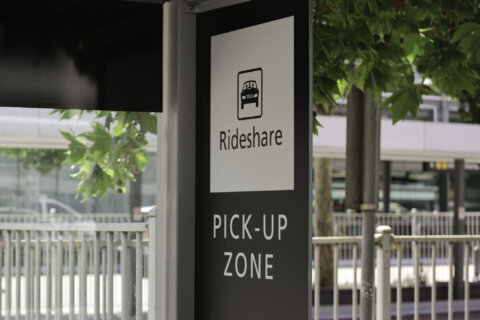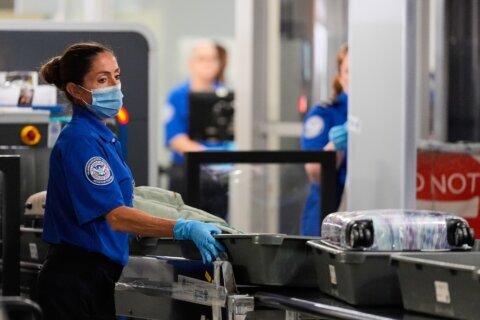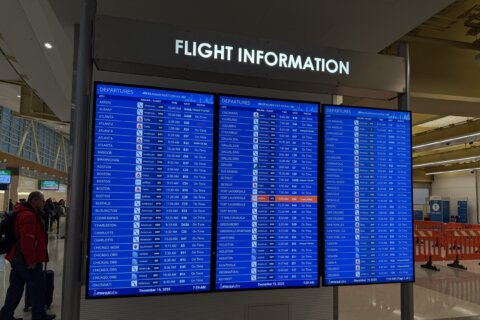Flight delays and cancellations are only increasing as a storm batters the United States during the peak of the holiday travel season, leaving holiday travelers uncertain and sometimes stuck.
At some airports, flights are delayed by about two and a half hours due to deicing operations and other weather issues. Some airports, including the Cleveland Hopkins International Airport and the Buffalo Niagara International Airport, had to cancel more than 50% of flights departing on Dec. 22, the day that the Federal Aviation Administration said was likely to be the busiest travel day of the holiday season. On Dec. 23, the chaos has continued, with more than 7,300 flights delayed and more than 5,100 cancellations expected.
Scott Keyes, the founder of Scott’s Cheap Flights, called it “the worst day of the entire year for cancellations,” noting that the expected rate of cancellations today is 30 times as many flights that get canceled on an average day.
If you’re a passenger, here’s what to know about what to do if you get stranded while trying to celebrate the holidays.
How can I tell if my flight will be canceled?
If you’re heading to the airport or already there, it might be worrying to watch the wave of cancellations. The key to knowing if your flight will go out involves taking a systemwide look at the weather: Even if the skies are clear at your departure location and it’s perfect weather at your arriving airport, that might not be enough.
Instead, know the weather at the airport where the plane you will be flying in is. If a plane can’t leave that airport to get to yours, you won’t be flying on time.
To deal with this, try downloading a good weather app and an airline operations app, and ask your airline for the tail number of the aircraft assigned to your flight. You can track that tail number on the airline operations app, and use the weather app to see what’s going on in that location. If something is going wrong, you might have a head start in rebooking your flight.
You can also sign up for text alerts from your airline that will give notice of delays, cancellations and more.
In cases where a delay or cancellation is the fault of an airline, most airlines will provide compensation or services like meals and a hotel for the night. However, that doesn’t apply when the airlines aren’t at fault, like when weather is bad.
Can I change my flight?
Airlines are offering full storm waivers, which allows travelers to rebook flights at a later date or get a full refund with no financial penalties, but at this point, it’s unlikely that air travel will be back to normal by Christmas morning. Keyes estimated that it will take about a week for the aftereffects of the delays and cancellations to be resolved.
Instead, it might be better to take that refund. Storm waivers can only be used in a limited rebooking window, so changing your flight may not be much use unless you’re ready to delay your holiday celebrations. Even if you aren’t being offered a storm waiver, airlines are required to refund your flight if it’s canceled or significantly delayed.
If you do decide to rebook, Keyes recommends taking a morning flight, since those are more likely to arrive on time and the plane that will carry you to your destination will already be at the airport. Nonstop flights are also a better bet than those with layovers. The key, though, is being proactive.
“Air travel is done on a real first-come, first-serve basis,” Keyes said. “If you see a seat, snag it … If you wait a few hours or days, it may be gone.”
What if I’m already at the airport?
If you’re already at the airport when your flight is canceled, prepare to talk to customer service. You can get in line to speak to an agent at the desk, but Keyes said the fastest way to get in contact with an airline representative is to call an international office for your airline.
“American, Delta, United, they’ve all got offices around the world,” Keyes said. “You can call any one of those international offices and get through to an agent who can help get you rebooked, just the same as a U.S.-based agent can but with a fraction of the wait time that you’d be facing if you called the main U.S. hotline.”
You can also ask about being booked on a different airline if that’s the only way you can get to your destination. It’s rare that airlines will do this, Keyes said, but it never hurts to ask.
What if my layover is affected?
If you’re traveling from one airport to another with an extra stop on the way, you might find yourself stuck in an airport far from home and your final destination. Remember Keyes’ earlier tips, like calling the international number and asking about being rebooked on a different airline.
You should also check your credit card: Many credit cards carry travel protections and will cover things like hotel rooms or the cost of purchasing fresh clothes and toiletries if you can’t access your checked bag. Using these features can help you stay in relative comfort while you’re stranded.
What if I’m driving?
With blizzard-like conditions across the United States and car accidents from the storm piling up, many people are being advised to stay off the roads, eliminating the option of just renting a car and driving to your final destination. That also means that some drivers are being stranded in transit.
If you absolutely must be on the road, AAA recommends having a winter emergency preparedness kit that includes things like warm clothes, extra food and water and a flashlight. Make sure you have at least half a tank of gasoline in your car at all times, and make certain tires remain inflated.
Among other AAA tips for winter weather behind the wheel: If you are on the roads, drive slowly. If visibility is too bad to keep moving, pull over in a safe location and put on your hazard lights. If you get stuck, stay with your vehicle and tie a brightly-colored cloth to the antenna or hanging out a rolled-up window to signal distress. Conserve fuel, make sure your exhaust pipe is not clogged with snow, ice or mud and use all available supplies to stay warm.







